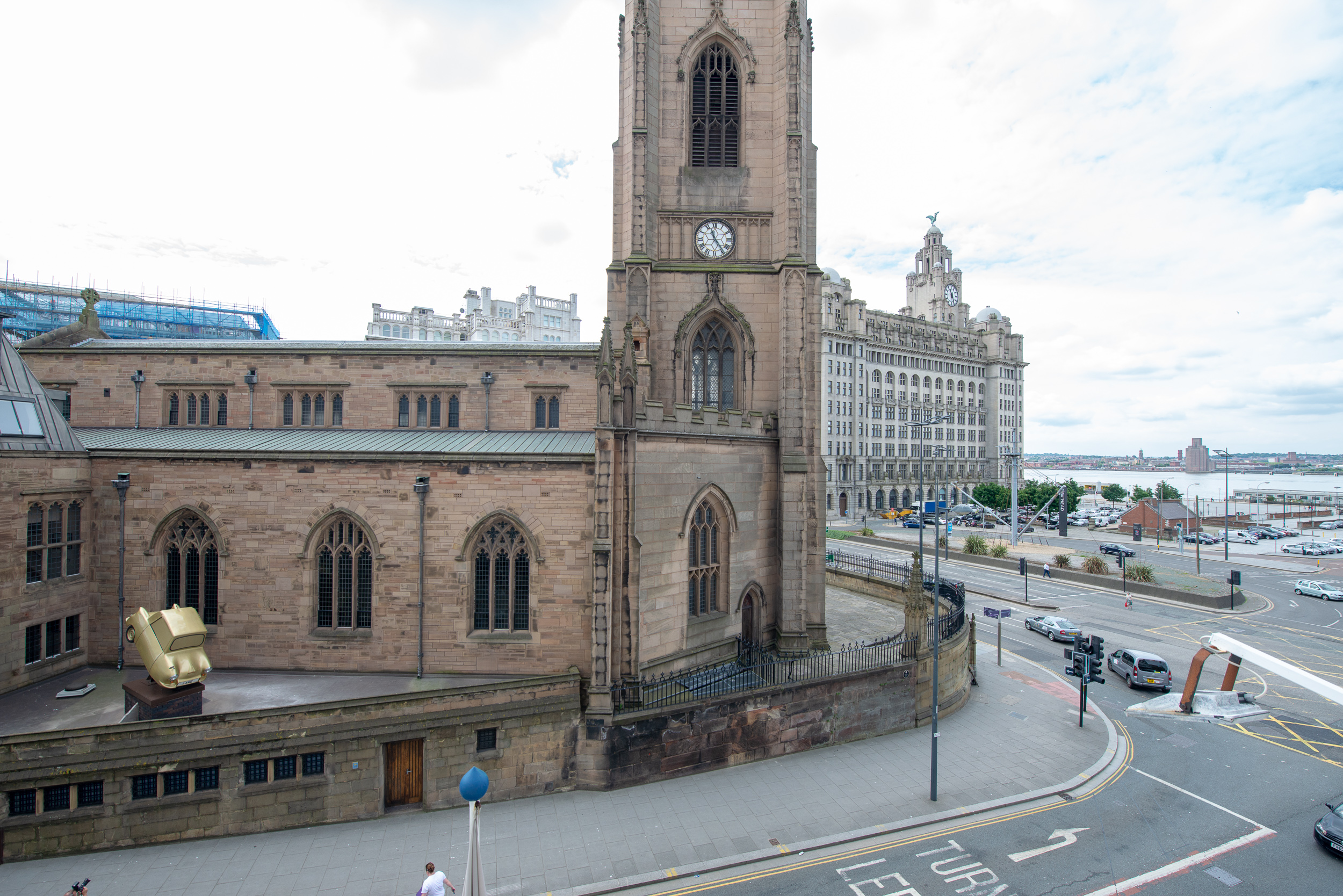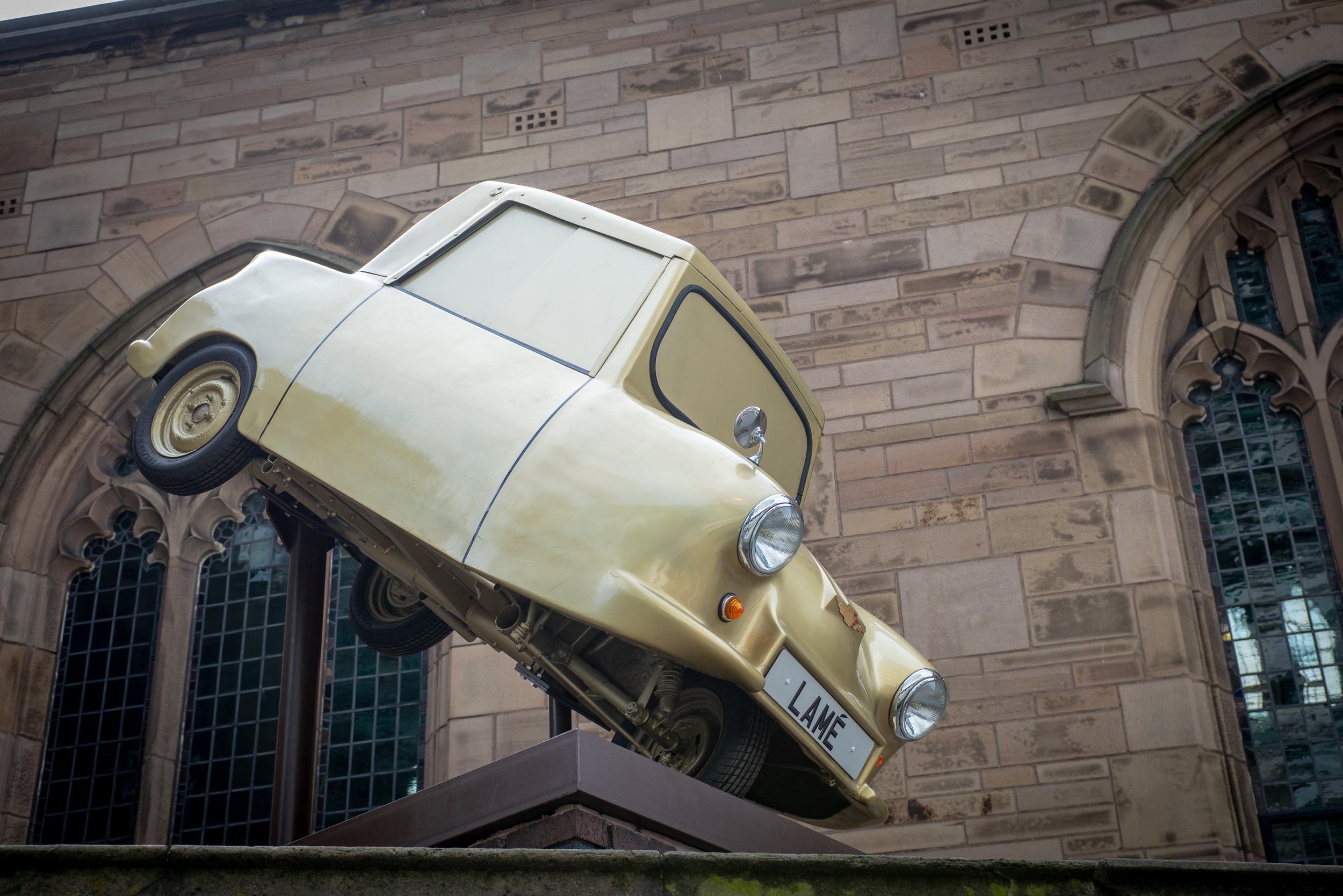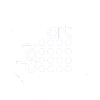The first sculpture to occupy the new Liverpool Plinth at St Nicholas Church has been unveiled!
New, annual sculpture competition The Liverpool Plinth aims to bring art to the public realm, showcasing a rolling programme of ideas and creativity through innovative sculpture, a northern competition akin to Trafalgar Square’s ‘Fourth Plinth’.
This week dot-art, together with Liverpool BID Company and Liverpool Parish Church, proudly announced Tony Heaton’s ‘Gold Lamé’ as this year’s competition winner, a piece originally commissioned by DaDaFest for their 2014 festival.
Tony has reimagined the NHS Invacar, an alternative mode of transport given to people living with disability in the 1970’s and 80’s. The wholly inadequate Invacar was a visible reflection of how people with a disability were perceived and ‘othered’ by society; an unlined fibreglass shell with a single seat to travel alone.

Swapping pale NHS blue with golden enamel, transforming the car from lame to Lamé, Heaton’s striking Gold Lamé opens an important dialogue as to how we view people with disability within contemporary society. Tony believes that the people of Liverpool will enjoy the humour in his sculpture and hopes that as the first sculpture on The Liverpool Plinth that it gives viewers the opportunity to reflect on everyone’s needs for accessibility and representation throughout the city.
We spoke to sculptor Tony Heaton about his current projects and the inspiration behind Gold Lamé:
dot-art: How do you feel being the first winner of The Liverpool Plinth?
Tony Heaton: I feel surprised, honoured and pleased, its a really great opportunity and I am delighted that my work was selected.
DA: Who or what inspired your career in the arts?
TH: I have always drawn from a very early age, my parents encouraged that, my Dad was always making things or fixing things in his garage, so using tools and materials was second nature. We went to the Harris Museum and Art Gallery in Preston and the Roman Museum at Ribchester, fascinating places for a young lad, if you wanted to learn something you looked in a book. I think artists are curious by nature. When I was at University we were out on Morecambe Bay and the Fellow in Sculpture, Paul Hatton, made a chance remark, that he always knew where I was on the beach because my crutches, footprints and wheel-tracks were different than everyone else’s. He suggested that this might be a useful area of inquiry for work, it was, and I have been inspired by that to make many works that could be said are a response to the impediment of disability and become transformed as a result of the inquiry.
DA: How did you choose to specialise in sculpture?
TH: I did a foundation course art at Southport College of Art and much later went on to study at Lancaster University, majoring in visual arts and concentrating on sculpture. I have always drawn and always either built things or taken things apart. I always had a penknife as a kid and would whittle away at a lump of wood. I was always drawn to sculpture when looking at art, either in books or galleries and museums. It seemed the natural medium for me to translate ideas into form than any other art form at the time and I was more comfortable with the material.
DA: How does your artistic process start?
TH: Usually an idea will be generated, perhaps from a conversation, something i have seen or heard, its hard to pin it down, sometimes you trip over ideas and sometimes they are a long time in the gestation. There are pieces I have pondered over for years and made in hours. I don’t work to a formula though I usually write down ideas and rough drawings in my ‘Ideas books’ – I like to store ideas up and to decide if they stand the test of time and are any good.
DA: You’ve created some incredible sculptures such as Great Britain from a Wheelchair, You Laugh At Me, and some very intricate pieces like your squarinthecircle? How does your approach change for such different styles?
TH: It always begins with the idea, then the thinking of how the idea will translate into form, what will be the right material to use, scale, how will the work be described. It’s usually quite well thought-through but there is always room for serendipity! – I don’t work in a particular style which is often considered a disadvantage because it makes the work difficult to attribute to me, but I am content with that.
DA: What message do you hope onlookers will take from Gold Lamé?
TH: Art should be open to interpretation, so onlookers will make of it what they will. I hope it will make them smile, be puzzling perhaps and make them curious to know more.
DA: Being from the north are you inspired by the region in your work?
TH: I was born in Preston and currently live in Southport. I think I am perhaps inspired by the people and places of the north because they are my roots and my culture. It’s the attitude and attributes of the north that may be present in the work rather than the landscape though, which is more difficult to define. I lived down in Dorset and in London for 20 years yet I always described myself as a northerner!

The Reverend Dr. Crispin Pailing, rector of Liverpool, said: “There is a long history of the church helping the arts to flourish. Art does not have to be explicitly religious to connect with people’s spirituality. We see this as an opportunity to help animate the city, and for those who engage with the sculpture to experience new horizons.”
Gold Lamé will be parked animatedly on The Liverpool Plinth for one year until the competition reopens and a new successor is chosen. To keep up to date with dot-art news and for future details of The Liverpool Plinth competition, sign up to our newsletter.


